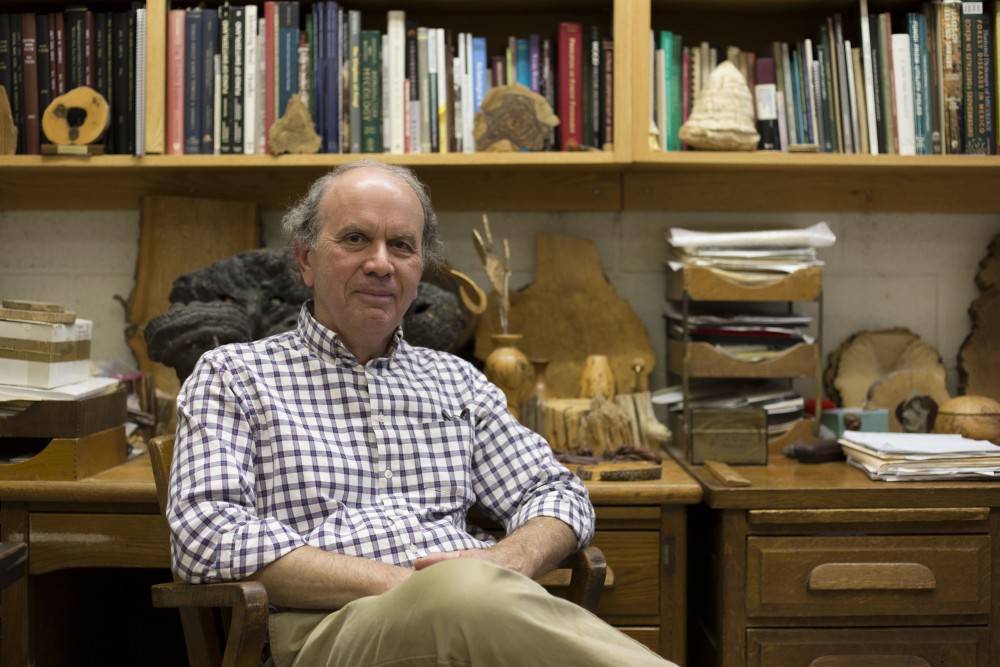Two hundred miles south of Cairo, in an old part of Egypt west of the river Nile, there is life in the city of the dead.
Wood-decaying fungi have been feasting in the tombs of Abydos for millennia, leaving the ornate caskets and hand-carved statues so weak they disintegrate at the touch.
There is little research on how to conserve the archaeological relics looted by these fungal bandits. But what little research there is has mostly been done by Bob Blanchette.
Blanchette, a wood pathologist at the University of Minnesota, has been at the forefront of the study of wood decay fungi for over four decades. His work has taken him to far-flung corners of the world and positioned him as the bridge between archaeology and mycology.
Blanchette’s ability to assess the biodegradation of wood in ancient objects has often been the key to saving them. It’s earned him international renown, said Jim Bradeen, head of the Department of Plant Pathology. “Bob really has an Indiana Jones quality to him,” he said.
Abundant, strong and lightweight, wood has been a building material of choice as long as humans have been around. From the tombs of ancient Egypt to the roof of Notre Dame, wood is culture. And it’s a part of culture perpetually under siege. Human heritage is irresistible to decomposers like fungi.

“We need them,” Blanchette said, “but they’re going to attack everything. Even our priceless oldest wooden objects. If you put wood in any environment, something is going to attack it.”
That includes a cemetery in the ruins of Abydos, burial place of Osiris, god of the underworld. Entombed under the desert, hundreds of Egyptians lie in painted coffins of cedar, juniper and acacia — woods naturally resistant to decay, but not infinitely so.
A team led by researchers at the Kelsey Museum of Archaeology were excavating the site with permission from the Egyptian Ministry of Antiquities, but something got to the graves first.
Each group of fungi leaves a signature, and Blanchette had seen this one before. The wood cells were filled with holes, as if riddled by bullets from a microscopic machine gun.
“When you go to excavate it, the whole thing just disintegrates into powder. It’s a horrible thing when you have some of the world’s oldest objects just poof, gone,” Blanchette said.
This was the work of a particularly pernicious group of fungi known as the soft rots.
They are well adapted to extreme environments, able to go dormant until conditions are right. They can wait for hundreds, even thousands, of years. Abydos is lucky to get more than a millimeter of rain a year, but the fungi reactivate at the slightest moisture, forming cavities in the wood with their tendril-like hypha and degrading artifacts from the inside out.
“It’s just like Swiss cheese what this fungus does,” Blanchette said.
Blanchette has encountered soft rots at all ends of the Earth. He found the fungus aboard the USS Monitor, a Civil War-era battleship 230 feet under the Atlantic.They thrive in Antarctica, where they’re feeding on the shacks built by Ernest Shackleton, an early pioneer of polar exploration.
The soft rots thoroughly colonized the tomb of King Midas, who ruled western Turkey around 700 B.C. The tomb held no gold, but lots of wood. Embedded in what was left of the king’s furniture, floorboards and coffin, Blanchette identified traces of fungi absolutely loaded with nitrogen. There was only one place they could’ve gotten that many nutrients — the fungi had been feeding on King Midas himself.
“He works in a field that not many other people work in. He’s established an incredible niche,” said Mike Wingfield, a forest pathologist at the University of Pretoria and Blanchette’s first Ph.D. student. “Nobody else has done this stuff.”
He’s become the person to call in an archaeological field that is increasingly multidisciplinary, said Janet Richards, who led the Abydos project. The level of decay in some archaeological woods makes excavating them impossible.
“When you find the wood, it often looks like what it used to be,” said Suzanne Davis, head of conservation for the Kelsey Museum of Archaeology. “But you’re just looking at a shell of paint. You can’t really pick it up.”
The team’s analysis detailing the decay was published last month. After mapping an artifact’s decay, conservators can use chemical consolidants to fill voids in the wood. “You can actually save these objects that would have disintegrated,” said Blanchette. “It used to be that you would just lose this stuff.”
The strengthened objects can then be excavated, studied and displayed in a museum — moving treasures crafted by humans thousands of years ago to honor the god of death one step closer to immortality.

















